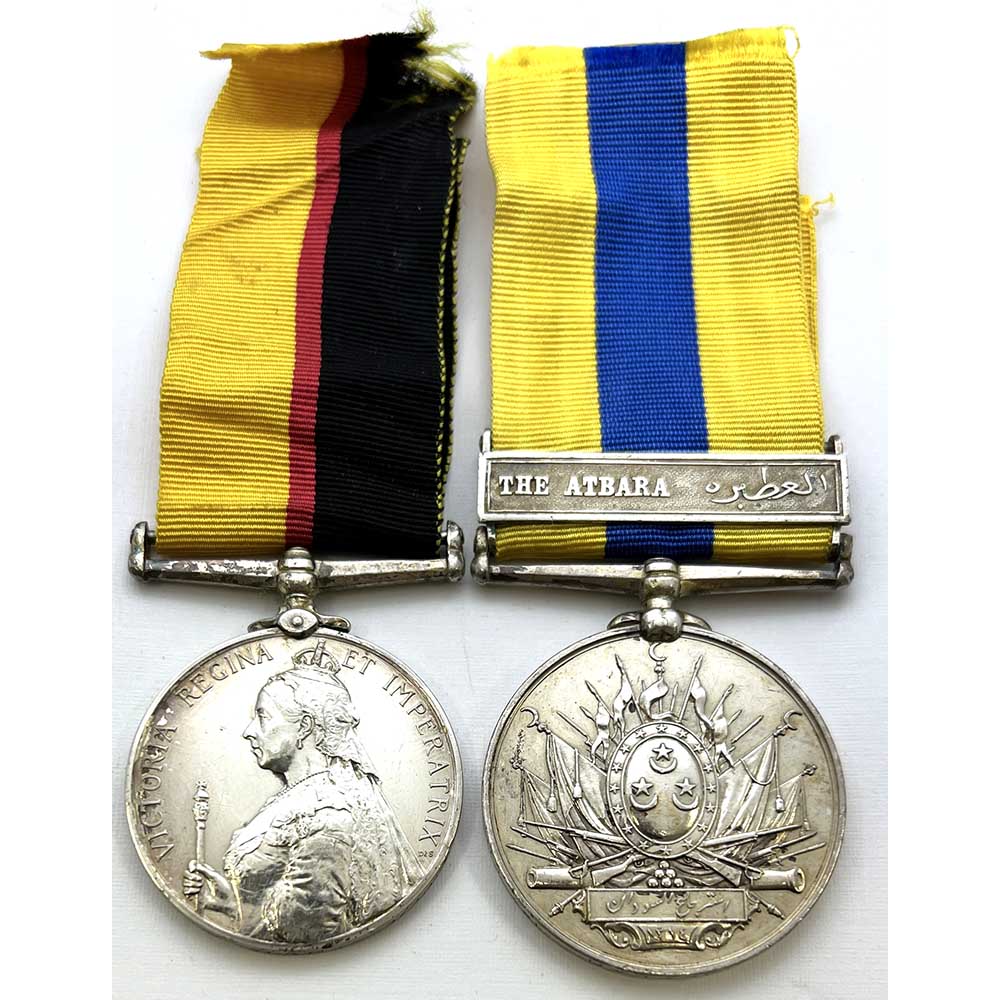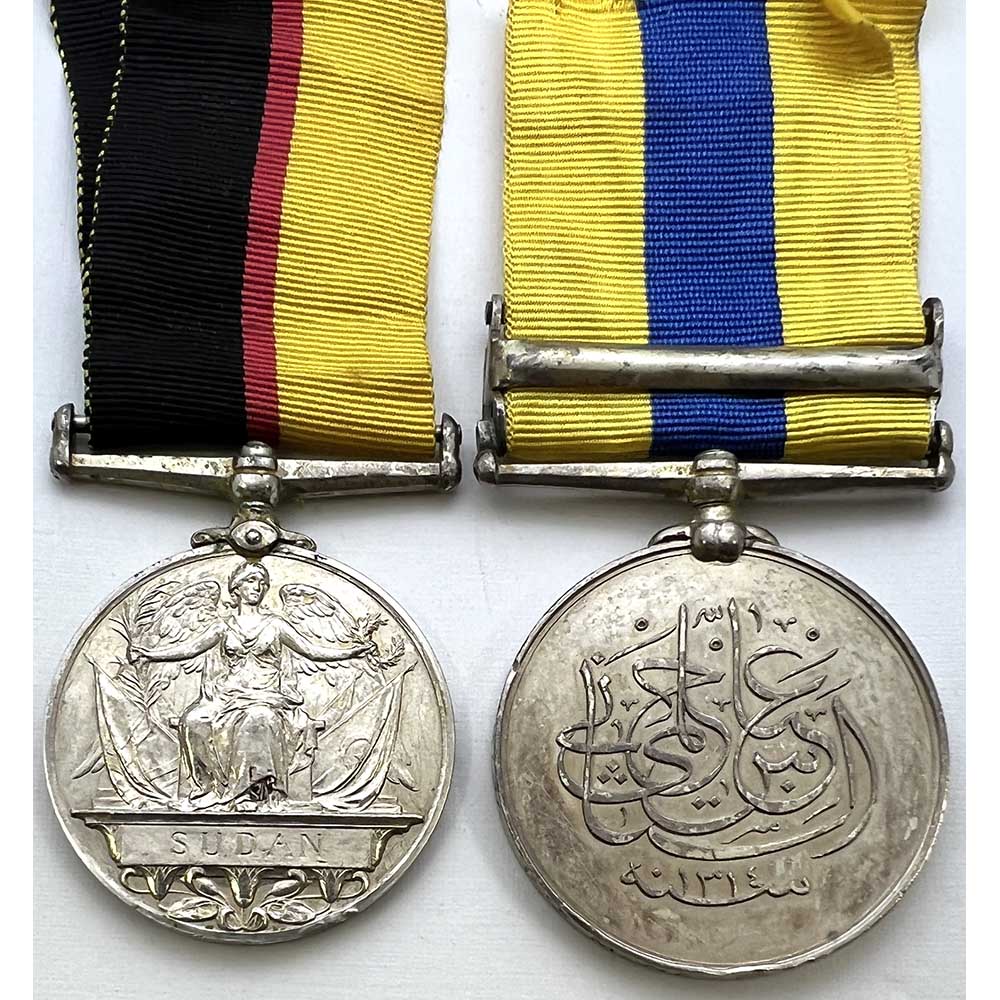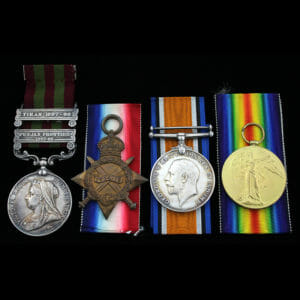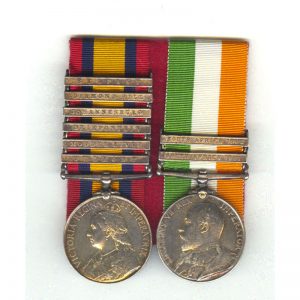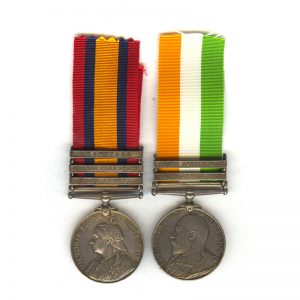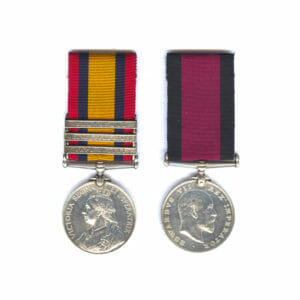Description
Queen’s Sudan Medal, Khedive’s Sudan, bar The Atbara, 3131 Pte Mark Neylan, 1st Lincolnshire Regiment, later Connaught Rangers and MGC, Dublin Man who worked at the Guinness Factory Brewhouse.
Queens Sudan Officially engraved: “3131 Pte M. Neylan. 1/Lin: R.”
Khedive’s Sudan Officially engraved: “3131 Pte M. Neylan. 1st Linc R.”
Good condition being barely worn, one edge bruise to both medals.
Mark Neylan, was an Irishman born in Drodgheda, Louth, just North of Dublin to a Roman Catholic Family on 18th September 1874.
As a young child aged 3 he had to be admitted into the Dublin Workhouse for medical treatment with his 5 year old sister.
He was the son of Patrick Mark Neylan and Maria, who lived in Patrick Street, Dublin. His older brother Christopher also served, in the Royal Irish Fusiliers.
As soon as he turned 18 he signed up for the Lincolnshire Regiment at Curragh Camp on 15th June 1892, having been a serving soldier in the 4th Battalion Royal Dublin Fusiliers Militia since April 1891.
He saw the following service:
Home, 3rd June 1892 – 31st January 1895
Malta, 1st February 1895 – 3rd February 1897
Egypt, 4th February 1897 – 17th October 1898
India, 18th October 1898 – 9th July 1904.
Papers note had served in the “Nile Expedition 1898, Battle of Atbara 8.4.1898.”
After retiring from the army and joining the Army Reserve in 1904, he married in Dublin during late 1908.
Returning to service in World War 1.
He enlisted with the 5th Connaught Rangers, landing in Gallipoli on 26th September 1915 with service number 5/353.
Seems to be part of replenishments sent as the 5th Connaughts received over 70% casualty rate during Gallipoli.
On 29th September they were withdrawn to the Island of Lemnos in Greece.
They were then sent to Salonika and the battalion advanced into Serbia and Bulgaria. The regiment suffered greatly in inhospitable lands, soon after they fought at Kosturino and the battalion received over 500 casualties.
He later transferred to the Machine Gun Corps number 93207.
Discharged as Class Z to the Army Reserve on 11th March 1919.
He immediately found work after the war in the Guinness Factory at St James Gate Brewery.
The excellent records kept by the Guinness Storehouse notes that he was 45 years old at the time, joining the company on 17th February 1919 with employee ID 15667.
He was a Labourer in the Brewhouse, physical and tough work a summary from Guinness’s website reads:
“The Brewhouse was the largest brewing department at St James’s Gate Brewery. In the Brewhouse, the first 3 ingredients, water, malted barley and hops, are mixed together to make a liquid known as ‘hopped wort’ which is then fermented with yeast to create GUINNESS stout. The Brewhouse was managed by a Senior Brewer, and in the 1960s had a work force of over 170 employees. Until the advent of automation in the 1970s, work in the Brewhouse was very manual. Men employed in the Brewhouse worked in eight hour shifts, seven days a week, to ensure continuous brewing.”
He died on 2nd June 1935.
